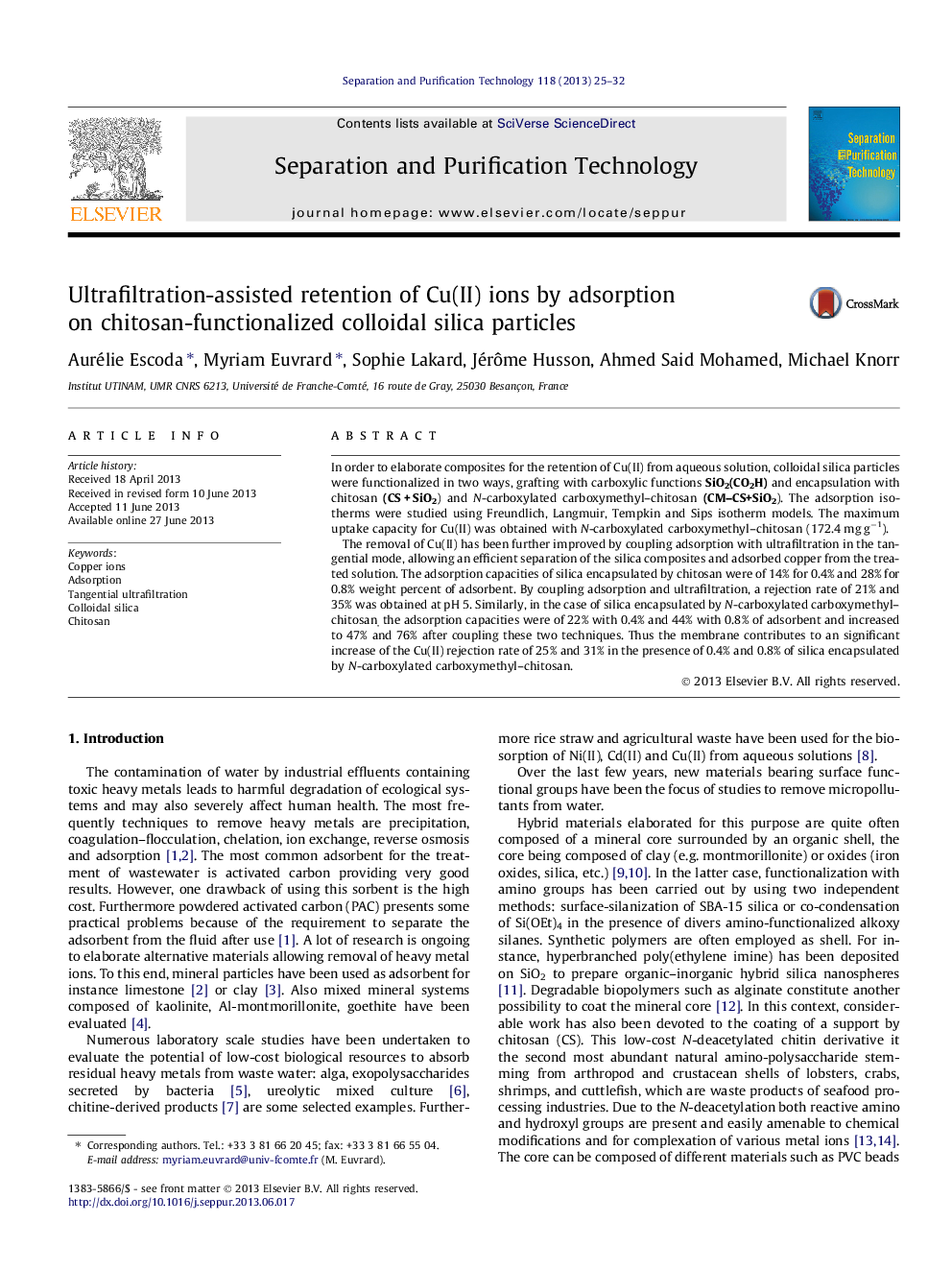| کد مقاله | کد نشریه | سال انتشار | مقاله انگلیسی | نسخه تمام متن |
|---|---|---|---|---|
| 641476 | 1457001 | 2013 | 8 صفحه PDF | دانلود رایگان |

• Cu(II) removal was studied by a combined process.
• Adsorption is coupled with ultrafiltration in the tangential mode.
• The adsorbents are colloidal silica particles functionalized by grafting or encapsulation.
• The retention of Cu(II) increases when adsorption is coupled with ultrafiltration.
• The filtration step improves the rejection rate up to 31%.
In order to elaborate composites for the retention of Cu(II) from aqueous solution, colloidal silica particles were functionalized in two ways, grafting with carboxylic functions SiO2(CO2H) and encapsulation with chitosan (CS + SiO2) and N-carboxylated carboxymethyl–chitosan (CM–CS+SiO2). The adsorption isotherms were studied using Freundlich, Langmuir, Tempkin and Sips isotherm models. The maximum uptake capacity for Cu(II) was obtained with N-carboxylated carboxymethyl–chitosan (172.4 mg g−1).The removal of Cu(II) has been further improved by coupling adsorption with ultrafiltration in the tangential mode, allowing an efficient separation of the silica composites and adsorbed copper from the treated solution. The adsorption capacities of silica encapsulated by chitosan were of 14% for 0.4% and 28% for 0.8% weight percent of adsorbent. By coupling adsorption and ultrafiltration, a rejection rate of 21% and 35% was obtained at pH 5. Similarly, in the case of silica encapsulated by N-carboxylated carboxymethyl–chitosan, the adsorption capacities were of 22% with 0.4% and 44% with 0.8% of adsorbent and increased to 47% and 76% after coupling these two techniques. Thus the membrane contributes to an significant increase of the Cu(II) rejection rate of 25% and 31% in the presence of 0.4% and 0.8% of silica encapsulated by N-carboxylated carboxymethyl–chitosan.
Figure optionsDownload as PowerPoint slide
Journal: Separation and Purification Technology - Volume 118, 30 October 2013, Pages 25–32